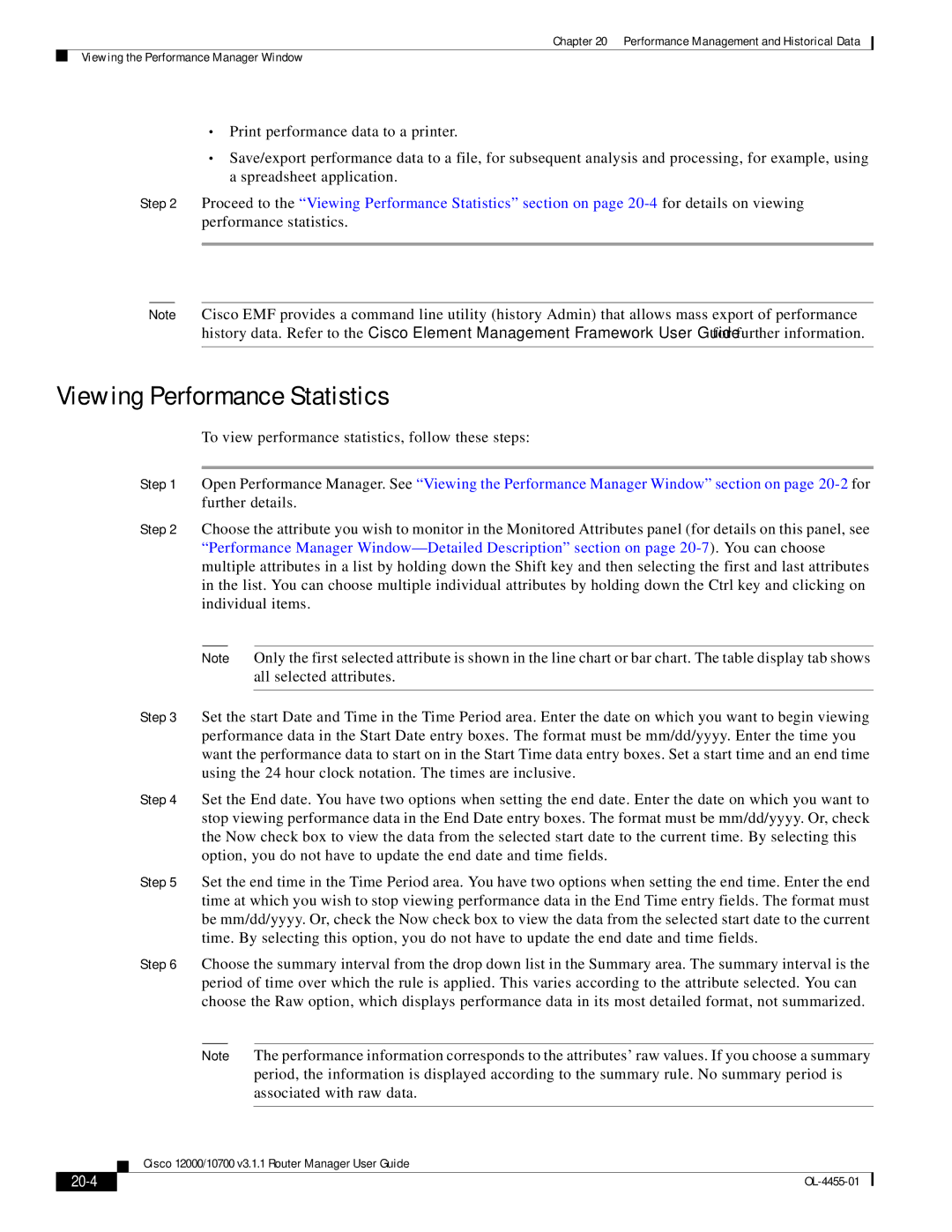
Chapter 20 Performance Management and Historical Data
Viewing the Performance Manager Window
•Print performance data to a printer.
•Save/export performance data to a file, for subsequent analysis and processing, for example, using a spreadsheet application.
Step 2 Proceed to the “Viewing Performance Statistics” section on page
Note Cisco EMF provides a command line utility (history Admin) that allows mass export of performance history data. Refer to the Cisco Element Management Framework User Guide for further information.
Viewing Performance Statistics
To view performance statistics, follow these steps:
Step 1 Open Performance Manager. See “Viewing the Performance Manager Window” section on page
Step 2 Choose the attribute you wish to monitor in the Monitored Attributes panel (for details on this panel, see “Performance Manager
Note Only the first selected attribute is shown in the line chart or bar chart. The table display tab shows all selected attributes.
Step 3 Set the start Date and Time in the Time Period area. Enter the date on which you want to begin viewing performance data in the Start Date entry boxes. The format must be mm/dd/yyyy. Enter the time you want the performance data to start on in the Start Time data entry boxes. Set a start time and an end time using the 24 hour clock notation. The times are inclusive.
Step 4 Set the End date. You have two options when setting the end date. Enter the date on which you want to stop viewing performance data in the End Date entry boxes. The format must be mm/dd/yyyy. Or, check the Now check box to view the data from the selected start date to the current time. By selecting this option, you do not have to update the end date and time fields.
Step 5 Set the end time in the Time Period area. You have two options when setting the end time. Enter the end time at which you wish to stop viewing performance data in the End Time entry fields. The format must be mm/dd/yyyy. Or, check the Now check box to view the data from the selected start date to the current time. By selecting this option, you do not have to update the end date and time fields.
Step 6 Choose the summary interval from the drop down list in the Summary area. The summary interval is the period of time over which the rule is applied. This varies according to the attribute selected. You can choose the Raw option, which displays performance data in its most detailed format, not summarized.
Note The performance information corresponds to the attributes’ raw values. If you choose a summary period, the information is displayed according to the summary rule. No summary period is associated with raw data.
Cisco 12000/10700 v3.1.1 Router Manager User Guide
|
|
|
|
